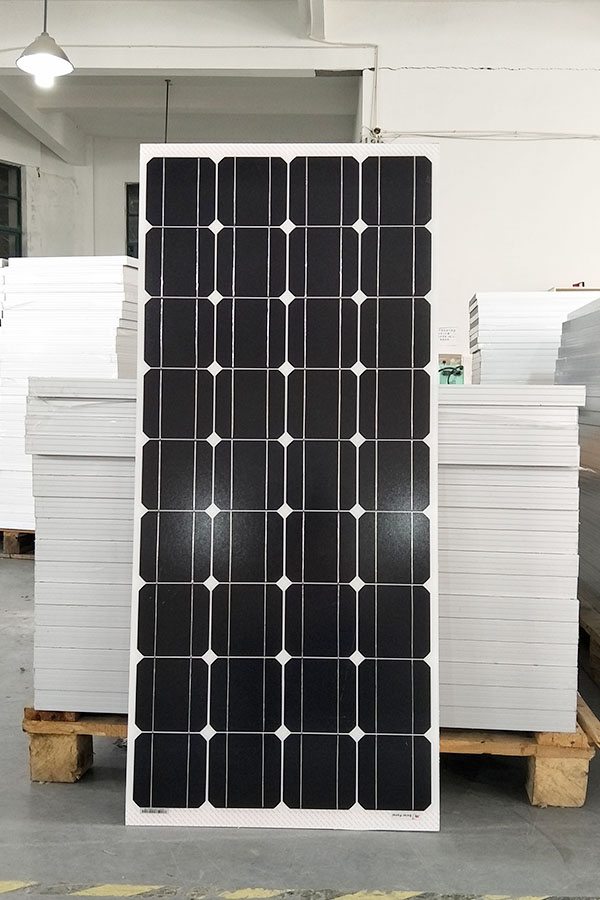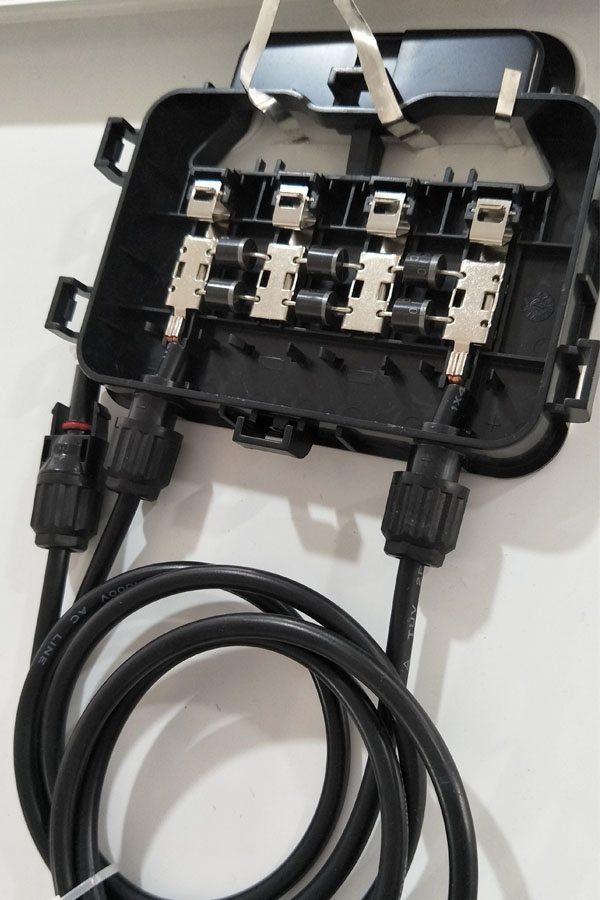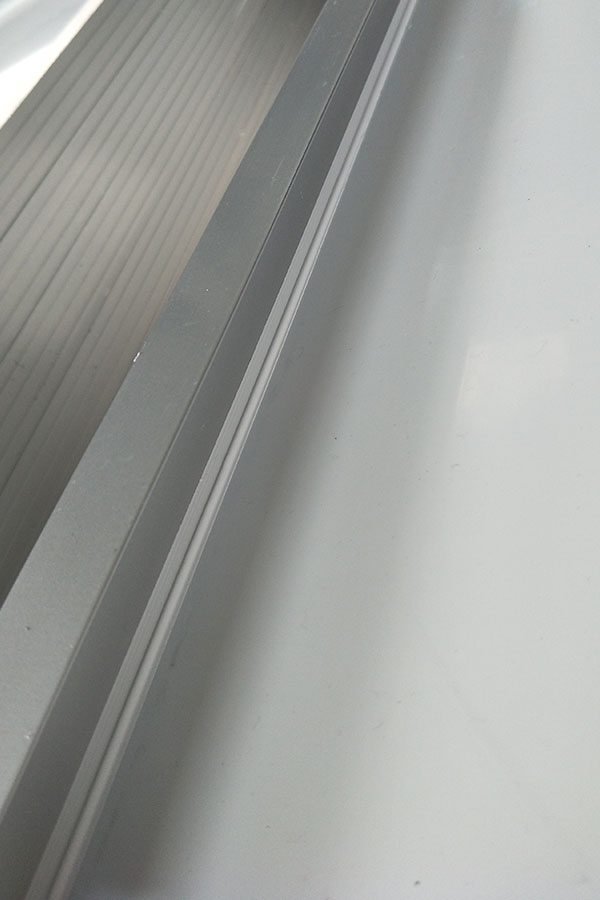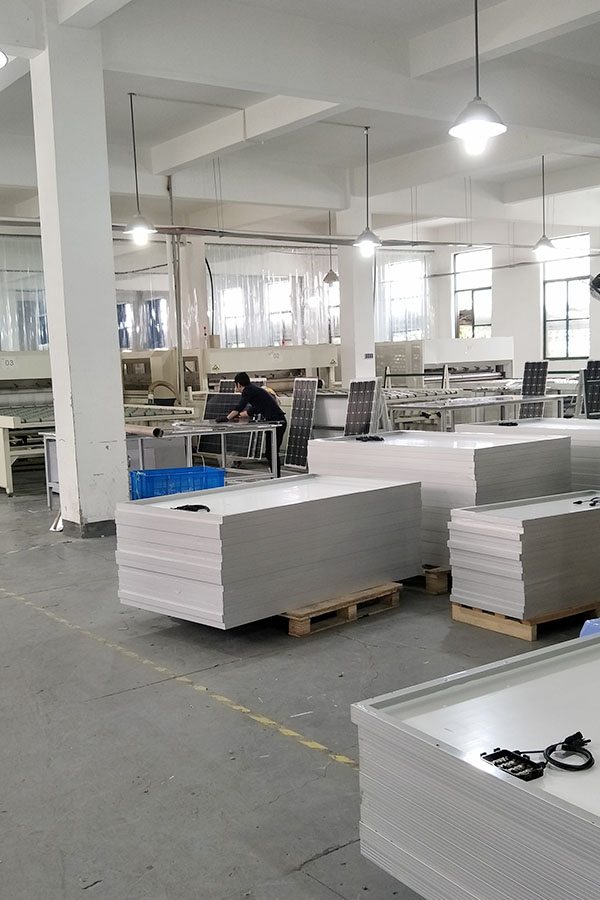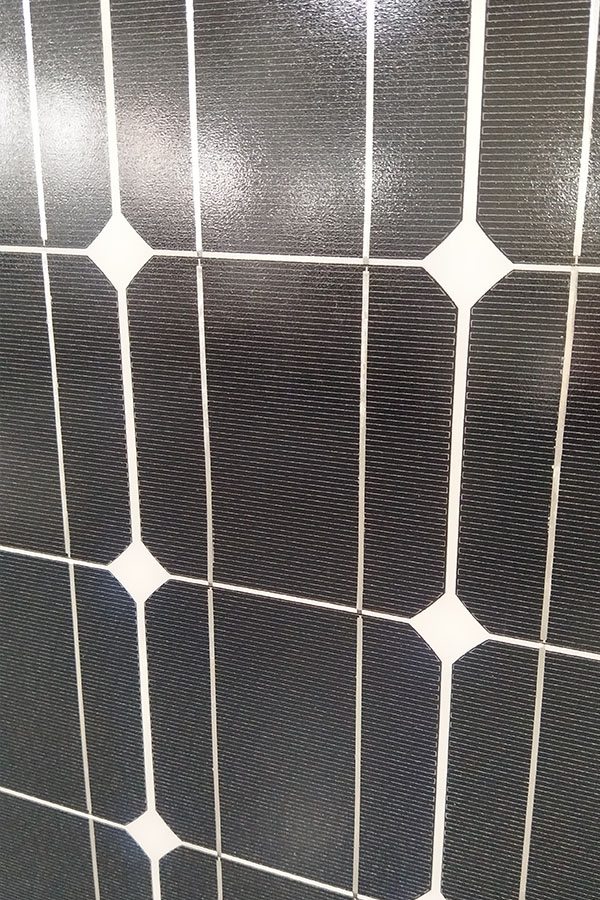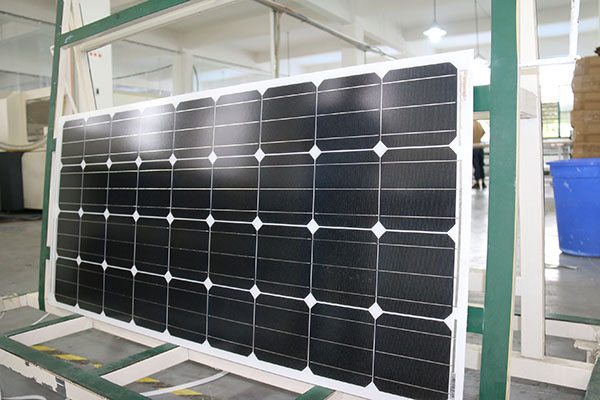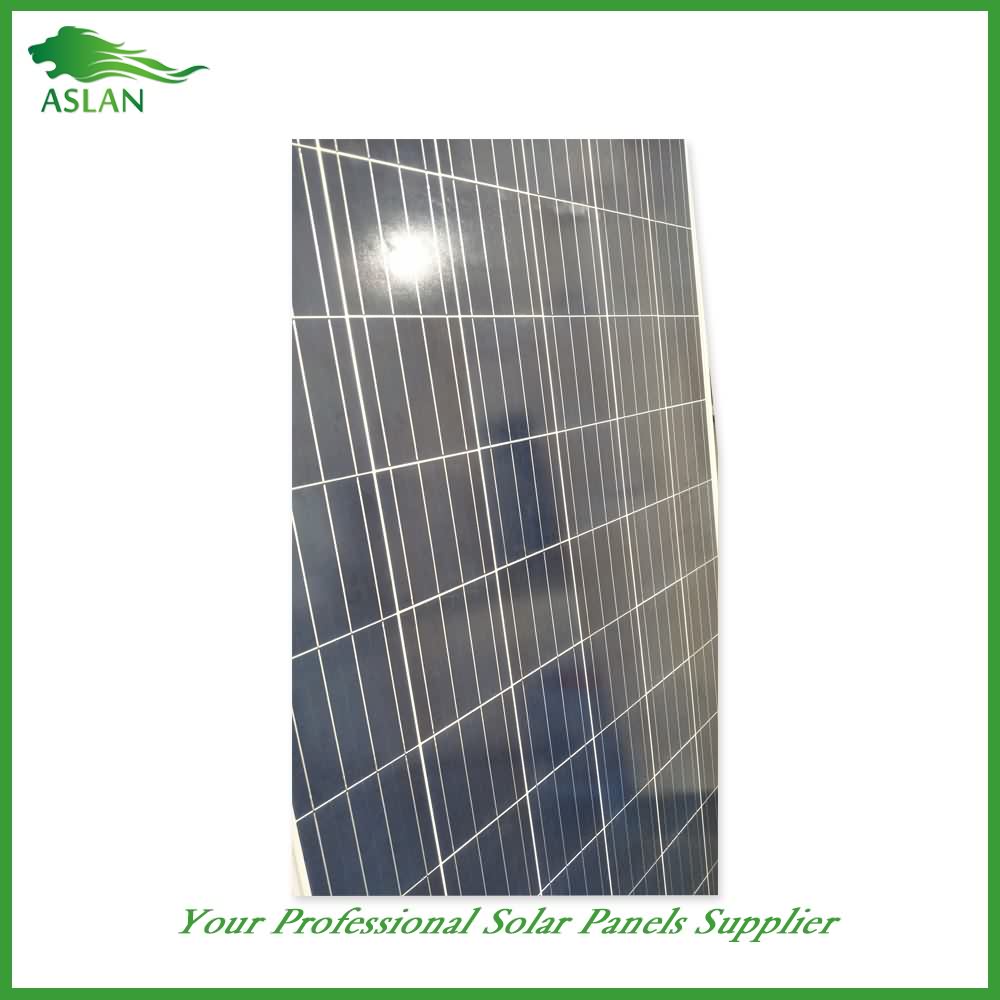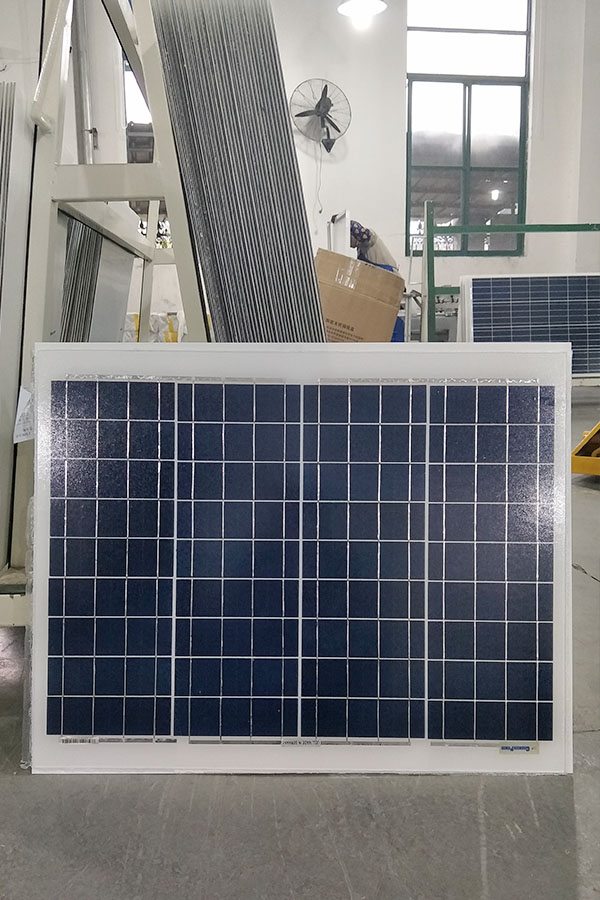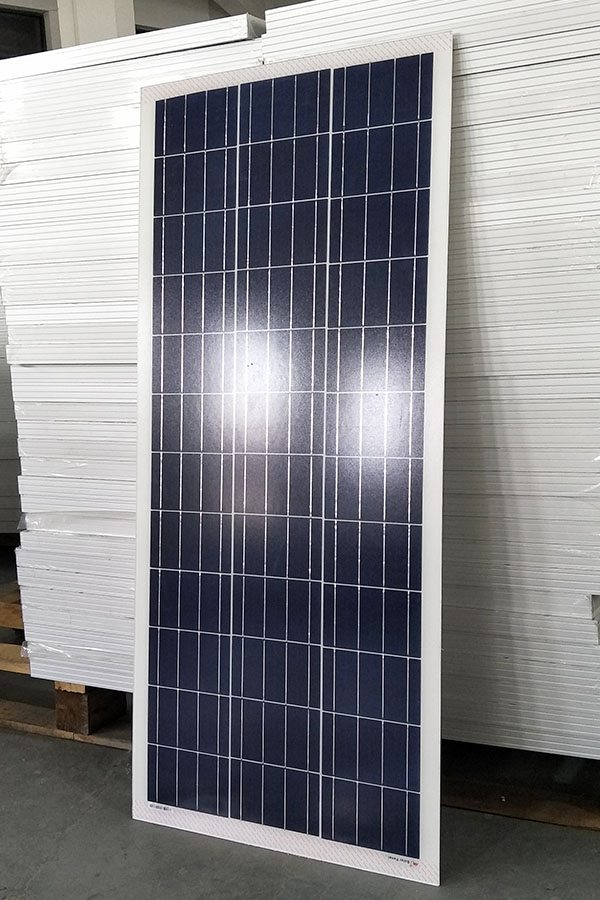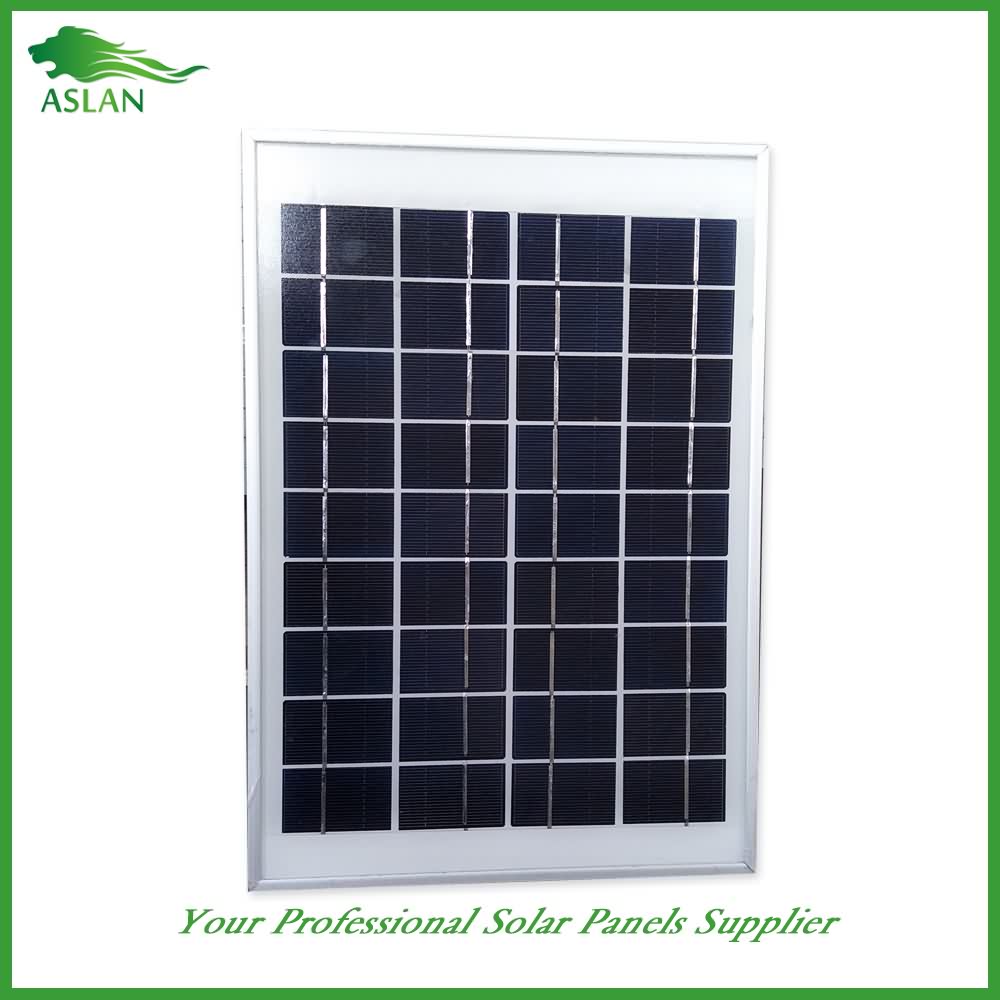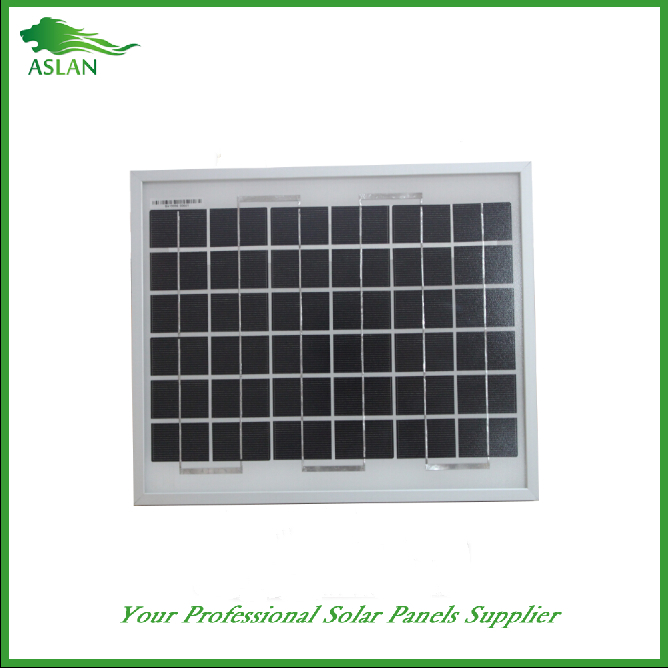2016 New Style Mono-Crystalline 150W Solar Panel Factory for Istanbul
Short Description:
We support our buyers with ideal high quality products and high level service. Becoming the specialist manufacturer in this sector, we have gained rich practical experience in producing and managing for 2016 New Style Mono-Crystalline 150W Solar Panel Factory for Istanbul, We warmly welcome friends from all walks of life to seek mutual cooperation and create a more brilliant and splendid tomorrow.
Mono-Crystalline 150W Solar Panel
Technical parameter
Maximum Power(W) 150W
Optimum Power Voltage(Vmp) 17.92V
Optimum Operating Current(Imp) 7.83A
Open Circuit Voltage(Voc) 21.86V
Short Circuit Current(Isc) 8.59A
Mechanical Characteristics
Cell Type Monocrystalline 156x156mm (6 inch)
No of Cell 36 (4x9pcs)
Dimensions 1485x668x35mm
Weight 11.6KGS
Front Glass 3.2mm,High Transmission, Low Iron,Tempered Glass
Junction box IP65 Rated
Output Cable TUV 1×4.0mm2/UL12AWG,Length:900mm
Temperature and Coefficients
Operating Temperature(°C): -40°C ~ + 85°C
Maximum System Voltage: 600V(UL)/1000V(IEC) DC
Maximum Rated Current Series: 15A
Temperature Coefficients of Pmax: -0.435%
Temperature Coefficients of Voc: -0.35%
Temperature Coefficients of Isc: 0.043%
Nominal Operationg Cell Temperature (NOCT): 47+/-2°C
Materials of solar panel
1).Solar Cell——Mono-crystalline solar cell 156*156mm
2).Front Glass——-3.2mm, high transmission, low iron, tempered glass
3).EVA——-excellent anti-aging EVA
4).TPT——-TPT hot seal made of flame resistance
5).Frame——anodized aluminum profile
6).Junction Box——-IP65 rated, high quality, with diode protection
Superiority: high quality anodized aluminum frame, high efficiency long life, easy installation, strong wind resistance, strong hail resistance.
Features
1. High cell efficiency with quality silicon materials for long term output stability
2. Strictly quality control ensure the stability and reliability, totally 23 QC procedures
3. High transmittance low iron tempered glass with enhanced stiffness and impact resistance
4. Both Polycrystalline and Mono-crystalline
5. Excellent performance in harsh weather
6. Outstanding electrical performance under high temperature and low irradiance
Quality assurance testing
Thermal cycling test
Thermal shock test
Thermal/Freezing and high humidity cycling test
Electrical isolation test
Hail impact test
Mechanical, wind and twist loading test
Salt mist test
Light and water-exposure test
Moist carbon dioxide/sulphur dioxide
Made a temporary “solar combiner box” to parallel PV array in various series configurations. This is for trial purposes only. Made 2 conductors of #2 CU wire that branch off into 4 conductors each of #10 4703 of appropriate length. Same gender MC4 connectors are attached to the ends of each of the four #10. Have tried 2, 3, and 4 panels in series. Now trying 6 panels; 3 strings of 2 in series. Voltage drop on a 43′ run from the panels to my charge controller is less than 0.7V @ 25A~45-50V (while loaded).
Will likely revert to panels in series of 3; 3 strings per array per charge controller. I’m still learning to not over-manage or micromanage the system. Other than ensuring loads aren’t excessive during dusk to dawn and watering batteries every few months, most things seem to reach a point of homeostasis, not requiring intervention.
A few things I’ve learned or noticed:
If you don’t use it, you lose it. I’m amazed how rapidly a small but continuous load will drain the battery bank (462Ah / 24v) when not being replenished. All my loads except my freezer and an occasional light, are generally off at dusk.
I’ve become very energy conscious. This isn’t power from the local power company; this is MY power. I’m not a normally possessive person… It’s now impossible for me to leave a room without making sure I’m not wasting energy. Frivolous use a energy is a thing of the past.
My 3000w PSW inverter uses ~ 75 watts to just be “on”, and ~9 watts to be kept in standby where is scans for loads over 40 watts. For this reason, I’m considering getting a another much smaller PSW inverter of about 300w just for nighttime use. Seems shameful to be using 75 watts to provide power for a freezer that uses only 79 watts, even if only when compressor is working a few times an evening.
TIP: Adding thermal mass to the freezer such as milk or soda containers full of water to displace air space will actually decrease “short-cycling” of compressor which is inherently inefficient. The goal is to minimize air space in freezer. This is especially true of vertical freezers that dump the cold air onto the floor when opened. But, I’ve also noticed an improvement in my chest freezer too, and the temps stay more consistent. An added benefit is less frost buildup since less air is moving into or out of the compartment with each opening of the door.
Another thing was my washing machine would get stuck between cycles while only the timer was on. I can leave the inverter out of standby to run washer, run it with another useful concurrent load, or wire a larger bulb into the washer’s “ON” indicator circuit (seems wasteful).
What I initially thought was a high self-discharge rate throughout the night was nothing more than the batteries cooling to ambient temps. My batteries would be floating at 27v up to nightfall. Then, in the morning, they would drop to 25.9 or even 25.8v. This was merely a drop (from 29C daytime to 23C nighttime) of the bank temp revealing itself. Obviously, keeping battery bank as consistently ~25C or so is optimal, but not possible in 90-100F temps.
Loads via kill-a-watt:
8 ft3 chest freezer, 127w to start, 79w to run
RULE 2000 32v water pump, 64w
Imac 27-inch computer 110-220w, variability based on display brightness!
wireless router 11w
5000btu window ac, 530w when very hot, 490w when has caught up and comfortable.
Hot plate, 1320w, but duty cycle decreases to ~40-50% once up to temp (boiling).
Craftsman cordless drill charger, 45w
1000w microwave, about 1700w for a fraction of a second, then 1130w.
Craftsman “6.5 HP” shop vacuum, 1410 watts
SpeedQueen coinop washer, 460 during agitation, 430-580 when spinning. This reading is because this washer begins to simultaneously pump out and spin with the tub full of water. Thus, the initial load is high, but then decreases as water is pumped out and the RPM of the tub increases.
Notes: Inverter default setting of 110v was changed to 120v. Have not noticed any increase in operational temps of any devices used on inverter vs. household current, nor have I encountered any that I couldn’t use due to poor power quality. Measured under various loads, V=119.xx to 120.xx, Hz=59.xx to 60.xx using Meanwell TS3000 inverter.
Laser Scribing of Thin-Film Solar Modules
Allegro laser systems are used for all processes associated with laser structuring (laser scribing) thin-film solar cells. Learn more: http://www.lpkf-solarquipment.com/products/allegroseries/thin-film-laser-scriber.htm?utm_source=youtube&utm_medium=social&utm_term=thin-film-laser-scriber&utm_content=video&utm_campaign=allegroseries
Depending on the actual thin-film technology (CIGS, CIS, aSi, aSi/µSi or CdTe) Allegro systems are equipped with the corresponding optimal laser sources. They can be equipped for machining from the film- or non-film side of glass.
Laser Scribing of Thin-Film Solar Modules
